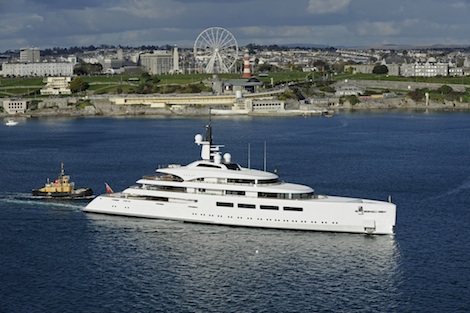PYC combustible materials rules flagged by builders
SYBAss has expressed disappointment on behalf of its members that concerns about combustible materials regulations with the third edition of the Passenger Yacht Code have not been considered. But the code's author believes that constructive dialogue between key stakeholders holds the key to its evolution.…
Following the most recent consultation period for revisions to PYC, which took place in Winter 2012, SYBAss claims it was invited by Lloyd’s Register, which acts as a recognised organisation on behalf of flag states during the construction of new builds, to provide comments on behalf of its members relating to any issues it felt had developed in the implementation of PYC.
SYBAss’ technical director, Chris van Hooren said that a number of members raised issues with combustible materials requirements, which were then communicated to Lloyd’s in mid-January 2013. Unfortunately, van Hooren explained, these issues were not acknowledged in the publication of the revised document.
“Ultimately it’s a case for the Red Ensign Group, where Cayman have taken the lead in the case of PYC”, van Hooren explained. “Version three has now been issued and none of the issues that we commented on have been changed. It makes us wonder why we were asked for feedback if it was ignored.”
Whilst Lloyd’s, as a class society, acts a conduit between builder and regulator, it is the Red Ensign Group, and specifically the Cayman Islands Ship Registry, that is the author and final arbiter in issues relating to the content of PYC.
“We held an industry wide consultation in May [2012] and produced 50 or 60 action points, which we have tried to accommodate in PYC 3”, Southgate explained. “Ultimately, there’s a wishlist, but when you’re trying to comply with an international standard, it’s difficult to include everything.”
The issue of combustible materials has been a recurring topic in the development of PYC. “Yachts a re built very differently to passenger ships”, Southgate explained. “And it was a challenge making that transition to passenger ship technology. But we recognised that and have tried to provide some flexibility within the code.”
Southgate is supportive of dialogue between all interested parties in the development of this living document: “If SYBAss want to present their concerns to me they will be given due credence, and where we can adopt their recommendations, we will. In the instances that we can’t, we will outline the reasons why.”
Profile links
Cayman Islands Shipping Registry
Superyacht Builders Association (SYBAss)
NEW: Sign up for SuperyachtNewsweek!
Get the latest weekly news, in-depth reports, intelligence, and strategic insights, delivered directly from The Superyacht Group's editors and market analysts.
Stay at the forefront of the superyacht industry with SuperyachtNewsweek
Click here to become part of The Superyacht Group community, and join us in our mission to make this industry accessible to all, and prosperous for the long-term. We are offering access to the superyacht industry’s most comprehensive and longstanding archive of business-critical information, as well as a comprehensive, real-time superyacht fleet database, for just £10 per month, because we are One Industry with One Mission. Sign up here.
NEW: Sign up for
SuperyachtNewsweek!
Get the latest weekly news, in-depth reports, intelligence, and strategic insights, delivered directly from The Superyacht Group's editors and market analysts.
Stay at the forefront of the superyacht industry with SuperyachtNewsweek





